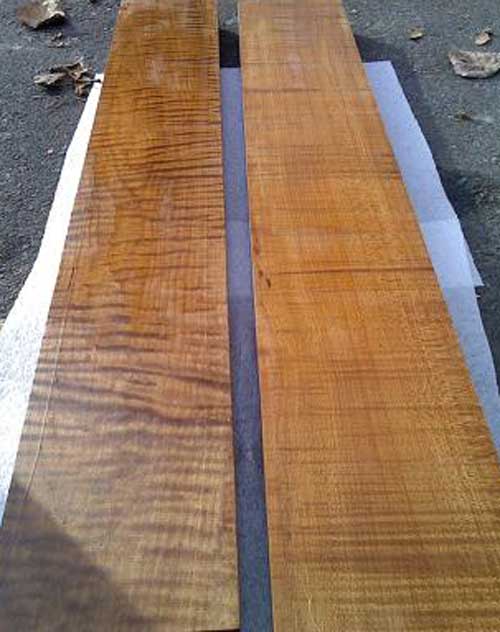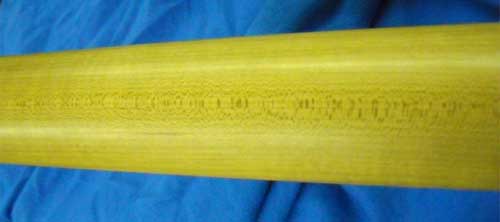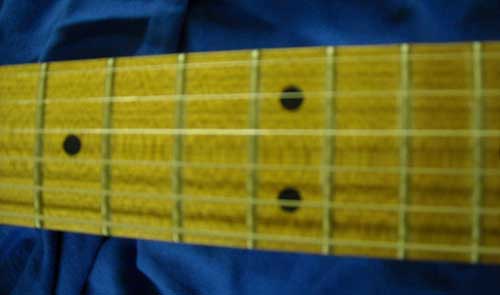Due to stability issues, I haven’t been a fan of highly figured maple necks, so baked maple (or roasted maple) was a new product that I had to try out.
The unique drying and baking of the maple makes the wood take on a brownish-honey color that is supposed to leave the neck more stable and less prone to shrinkage and movement brought on by weather changes. My source (USA Custom Guitars) hooked me up with a great-looking flamed baked maple neck, and I was ready to put it through the paces.
To test for shrinkage, I let the neck sit over the winter in a very dry, non-humidified area along with several other maple necks. Result: The baked maple neck was the only one that did not exhibit any fret sprout.
Normally, a neck will take days or weeks of adjustments under string tension before it is stable. Once my neck was finished and assembled, it had a much shorter settling-in period compared to standard maple, and wherever I set the truss rod, it stayed.
For comparison, I tried a regular maple neck on the same guitar. Acoustically, the baked maple neck was a bit more resonant and louder.
I had friends play several gigs with the guitar, including an outdoor humid show one night right to an air-conditioned event the next. Through all of this the neck remained stable without needing further adjustments. I’ve used baked birdseye and flamed maple necks on several customer guitars and have had the same positive results.
Overall baked maple seems very promising. I plan to continue testing, but after more than a year, I haven’t run into the usual issues with figured necks.
I feel confident that using baked maple will give you a distinctive neck with no stability issues. If you’re interested in using it, give me a call and we can talk about making it a key feature in your custom guitar.


